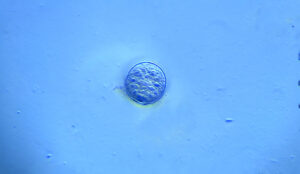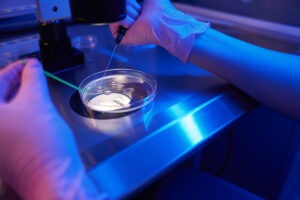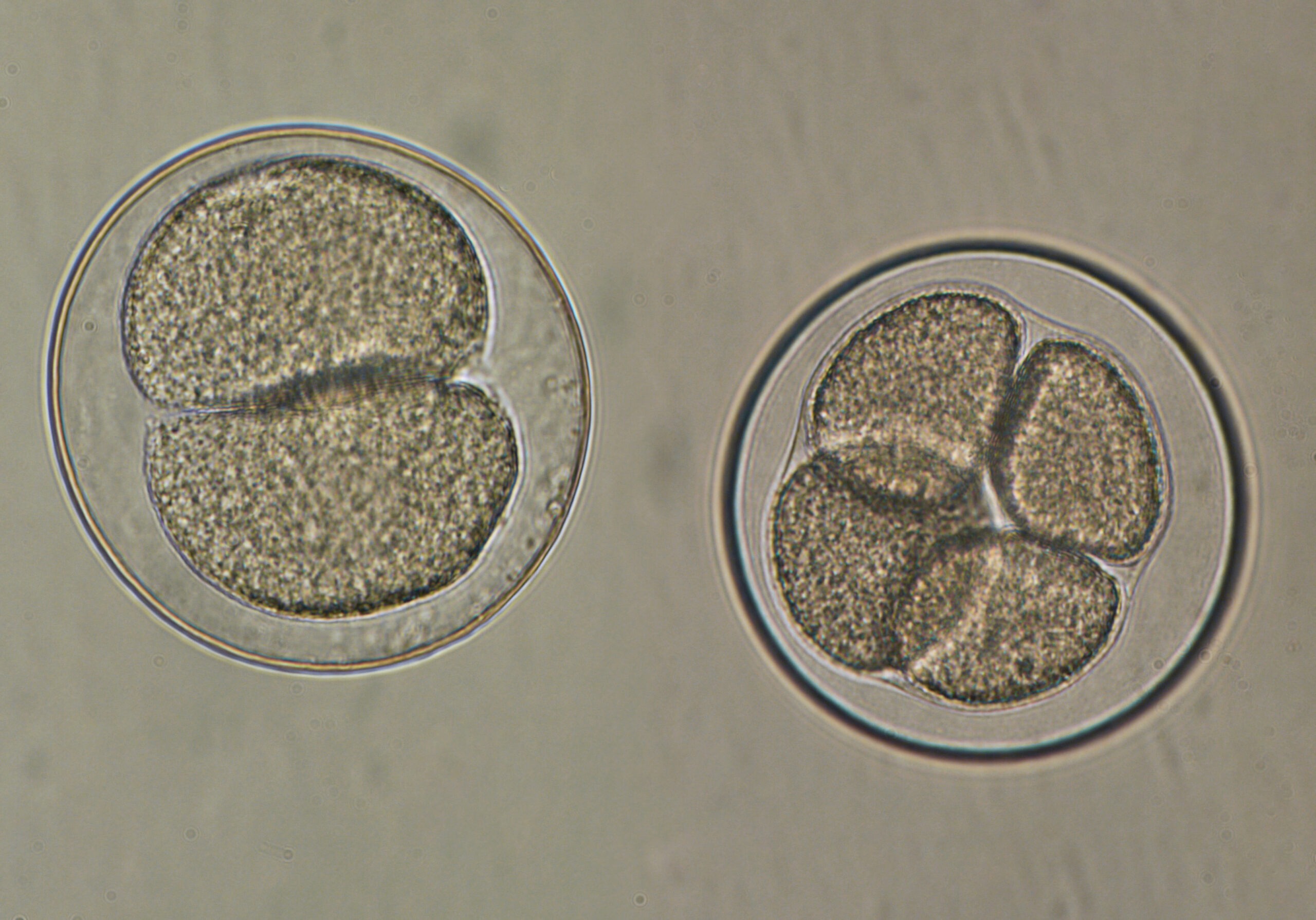IVF Embryo Culture Media: The Key to Successful In Vitro Fertilization
For fertility specialists and medical device manufacturers alike, the quest for successful In Vitro Fertilization (IVF) outcomes hinges on meticulous attention to detail. Every step, from ovarian stimulation to embryo transfer, plays a crucial role in nurturing the delicate spark of life. In this intricate dance, IVF embryo culture media emerges as a silent yet critical partner, providing the optimal environment for fertilized eggs to develop into healthy blastocysts.
This comprehensive guide, crafted with insights from seasoned experts, delves into the world of IVF embryo culture media. We aim to equip medical device manufacturers and local distributors with the knowledge to navigate this dynamic landscape, ultimately contributing to improved IVF success rates for clinics and enhanced patient experiences.

What is IVF Embryo Culture Media?
Imagine a nurturing haven—a microcosm replicating the natural environment within the fallopian tubes, where a fertilized egg undergoes the remarkable journey of cell division and development. This haven, meticulously formulated in a laboratory setting, is what IVF embryo culture media represents.
These specialized culture media are complex solutions that provide essential nutrients, growth factors, and a precisely maintained pH level to support the earliest stages of embryonic growth. Think of them as the fertile soil in which the seeds of life can flourish.
Role and Importance in the IVF Process: Orchestrating the First Steps of Life
The success of any IVF cycle hinges on a series of well-coordinated events. Following egg retrieval, sperm injection, and fertilization, the fertilized eggs embark on a critical journey of cell division within the controlled environment of an incubator. Here, the carefully selected embryo culture media play a pivotal role:
- Nutritional Support: The culture media supply the developing embryos with the necessary building blocks for growth, including carbohydrates, amino acids, vitamins, and minerals.
- Physiological Mimicry: The media strive to closely replicate the physiological conditions of the oviductal fluid, ensuring optimal pH levels, gas exchange (oxygen and carbon dioxide), and osmotic pressure. This delicate balance fosters a seamless transition from the in vivo (within the body) to the in vitro (outside the body) environment.
- Waste Removal: The culture media act as a conduit, facilitating the removal of metabolic waste products produced by the developing embryos.
The intricate interplay between these functions fosters a nurturing environment that directly impacts:
- Cleavage Rates: The number of cell divisions an embryo undergoes in the first few days.
- Blastocyst Formation: The development of a healthy blastocyst, the ideal stage for successful implantation in the uterus.
- Embryo Quality: The culture and media can influence the overall health and viability of the developing embryos.

Types of Embryo Culture Media: Navigating the Choices
The world of IVF embryo culture media offers a spectrum of options, each with its own set of advantages and considerations. Let’s delve into the two primary categories:
-
Single-Step Media:
- Simplicity in Use: These media are designed for the entire culture period, offering a user-friendly approach for clinics.
- Cost-Effectiveness: Single-step media tend to be a more economical option compared to sequential media.
- Potentially Lower Success Rates: Some studies suggest that single-step media might have slightly lower blastocyst formation rates compared to sequential media.
-
Sequential Media:
- Mimicking the Fallopian Tube Environment: Sequential media involve a two-step approach, mirroring the changing environment within the fallopian tubes.
- Potentially Higher Success Rates: Sequential media may be associated with higher blastocyst formation rates and improved embryo quality.
- Increased Complexity: Utilizing sequential media requires careful handling and switching of media at specific time points, adding a layer of complexity to the laboratory workflow.
Choosing the Right Media: A Data-Driven Decision
Selecting the optimal embryo culture media for your specific needs requires a data-driven approach, considering various factors:
- Clinic Volume and Patient Demographics: High-volume clinics may prioritize the efficiency of single-step media, while specialized clinics might choose sequential media for enhanced outcomes in complex cases.
- Embryo Quality: If dealing with suboptimal embryo quality, sequential media may be advantageous.
- Existing Laboratory Workflow: Factor in the level of staff expertise and comfort with using sequential media.
- Cost Considerations: Balance the potential benefits of improved success rates with the cost implications of sequential media.

Beyond the Basics: Brand Comparisons and Emerging Trends
The global market for embryo culture media is a dynamic landscape, with leading brands like CooperSurgical, Vitrolife, and Irvine Scientific vying for market share. While brand loyalty plays a role, focusing on media composition, performance data from credible clinical trials, and a brand’s commitment to research is essential.
Leading Manufacturers and Their Brands
- Vitrolife AB: Offers a range of embryo culture media under the Vitrolife brand, including both single-step and sequential media formulations. Vitrolife has a strong reputation for consistent quality and research supporting their media efficacy.
- CooperSurgical Fertility Solutions, similarly, Cooper Companies through its IVF division, provides a complete portfolio of culture media, both single and sequential, through Sage, LifeGlobal and Origio brands,
- Irvine Scientific: offers both protein and non- protein supplemented continuous single-step formulation media.
Quality Control Concerns: A Case for Vigilance
Recent cases of damaged embryos in the US, due to faulty media, underscore the importance of robust quality control measures in embryo culture media production. Ensuring consistent quality and adhering to stringent standards are crucial for maintaining trust and efficacy.
Optimizing Embryo Culture Conditions: Cultivating a Haven for Success
Having explored the types and selection considerations for embryo culture media, let’s delve into the practical elements of optimizing embryo culture conditions. Here are some key best practices:
- Strict Aseptic Techniques: Maintaining a sterile environment is paramount to preventing contamination, which can significantly impact embryo development.
- Storage and Handling: Embryo culture media are delicate solutions with specific storage requirements. Follow the manufacturer’s recommendations for temperature, light exposure, and expiration dates to ensure their efficacy.
- Incubator Environment: Maintain consistent temperature, humidity, and gas composition (oxygen and carbon dioxide) for optimal embryonic development. Regular calibration and maintenance of incubators are crucial.
- Equilibration: Ensure proper equilibration before introducing embryos into the culture media, allowing the media to reach the desired temperature and gas composition within the incubator.
- Volume and Changes: Utilize the recommended volume of media for the culture dish size and embryo stage. Depending on the chosen media type, consider the frequency of media changes.

Success Stories and Research Findings: Witnessing the Power of Optimized Culture
The impact of effective embryo culture media can be profound. Here are a few success stories:
- Case Study 1: A clinic implementing a new sequential culture media system observed a significant increase in blastocyst formation rates, leading to improved clinical pregnancy rates for their patients.
- Case Study 2: A study investigating the effect of media composition on embryo quality demonstrated that a specific formulation with added antioxidants resulted in improved embryo development and implantation potential.
These examples, along with ongoing research efforts, highlight the critical role of optimized embryo culture media in enhancing IVF success rates.
Conclusion: Cultivating a Future Filled with Hope
The world of IVF is constantly evolving, with advancements in embryo culture media playing a pivotal role in fostering the miracle of life. By understanding the types, selection criteria, and best practices for utilizing embryo culture media, medical device manufacturers and local distributors can empower clinics with the tools they need. This, in turn, translates to improved patient outcomes and a future filled with hope for aspiring parents around the globe.
Emerging Trends in Embryo Culture Media
The future of embryo culture media is brimming with exciting possibilities:
- Personalized Media Formulations: Research is exploring the potential of tailoring media composition based on individual patient factors or specific embryo characteristics.
- Media with Specific Growth Factors: Supplementation with specific growth factors or other signaling molecules to enhance embryo development and implantation potential.
- Microfluidic Devices: The use of microfluidic devices for embryo culture is a promising area of exploration, offering precise control over the microenvironment surrounding the embryos.
The Role of Distributors: Bridging the Gap Between Innovation and Implementation
Local distributors play a vital role in ensuring the successful implementation of innovative embryo culture media in clinics worldwide:
- Education and Training: Distributors provide comprehensive educational resources and training programs on new media options and best practices.
- Technical Support: Distributors offer vital technical support to clinics, ensuring proper handling, storage, and utilization of the media.
- Market Access and Regulatory Support: Distributors navigate the complex regulatory landscape of different countries, facilitating market access for innovative media solutions.

Conclusion (Continued): A Call to Action
By fostering a spirit of collaboration between medical device manufacturers, local distributors, and IVF clinics, we can collectively push the boundaries of what’s possible in the world of embryo culture. As research continues to unveil new insights and innovative media formulations emerge, the future of IVF holds immense promise for aspiring parents worldwide.
Here’s how you, as a medical device manufacturer or distributor, can play a pivotal role:
- Investing in Research and Development: Continued investment in research is crucial to refine existing media formulations, explore personalized approaches, and develop next-generation media solutions with targeted functionalities.
Prioritizing Quality and Transparency: Maintaining the highest quality standards and transparency in manufacturing processes is essential to ensuring the reliability and efficacy of embryo culture media. This includes stringent quality control measures, rigorous testing, and clear communication of any issues that arise.
- Collaborating with Clinics: Building strong relationships with IVF clinics helps to gather valuable feedback on media performance, facilitating continuous improvement. Additionally, offering tailored support and training to clinic staff enhances the overall effectiveness of the media.
- Staying Informed on Regulatory Changes: Keeping abreast of regulatory developments and ensuring compliance with varying standards across different regions is critical. This includes understanding the specific requirements for market approval and working closely with regulatory bodies to navigate the approval process efficiently.
- Promoting Best Practices: Sharing best practices and success stories through case studies, webinars, and publications can help spread knowledge and drive the adoption of optimal embryo culture conditions across the industry.
Summary: The Path Forward
The journey from fertilization to a healthy embryo ready for transfer is a delicate and complex process. The role of IVF embryo culture media in this journey cannot be overstated. By selecting the right media, adhering to best practices, and fostering innovation through research and collaboration, we can significantly improve IVF success rates and help more families achieve their dreams of parenthood.
As medical device manufacturers and distributors, your contributions are pivotal in this mission. By prioritizing quality, supporting clinics, and staying at the forefront of emerging trends, you are not only advancing the field of reproductive medicine but also making a profound difference in the lives of countless individuals and families around the world.
Together, let’s cultivate a future where the dream of creating life becomes a reality for all who seek it.
FinDBest IVF: Your Bridge to the Best in Embryo Culture Media Distribution

Finding the right distributor who truly understands the unique needs of IVF embryo culture media can be a challenging task. FinDBest IVF tackles this challenge head-on. Our platform is designed to connect IVF/ART device manufacturers with distributors who:
Specialize in Embryo Culture Media: Find distributors with a proven track record of handling a variety of culture media types, from single-step to sequential formulations, ensuring they meet the specific needs of IVF clinics.
Demonstrate Reliability: Access detailed distributor information and evaluate their track records for on-time delivery and product integrity, ensuring that your culture media maintain their efficacy from production to clinic use.
Go the Extra Mile: Identify distributors offering comprehensive training resources and technical support to clinics, facilitating seamless integration and optimal use of your culture media products.
Let FinDBest IVF shorten your path to the ideal distribution partners. By ensuring your innovative culture media reaches clinics with the quality they deserve, you empower more hopeful parents-to-be around the globe.





